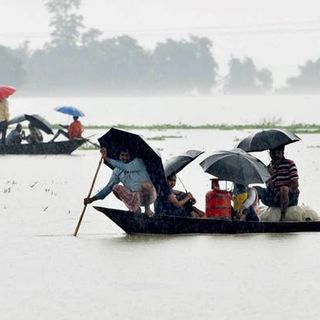A new study was warned that if humans fail to reduce greenhouse gas emissions, polar bears could be driven to extinction by 2100.
Polar bears depend on frozen surfaces to hunt seal, which is their main food source. But, due to global warming, and melting sea ice, polar bears could starve. While the species can fast for months by relying on stored body fat, the projected loss of ice by 2100 would outlast the bears’ fasting ability, according to scientists.
Published yesterday in the journal Nature Climate Change, the study calculated the endurance limits of polar bears by modelling their energy use. “What we’ve shown is that, first, we’ll lose the survival of cubs, so cubs will be born but the females won’t have enough body fat to produce milk to bring them along through the ice-free season. Any of us know that we can only go without food for so long. That’s a biological reality for all species,” Dr. Steven Amstrup, chief scientist for Polar Bears International, a conservation-focused organization, who was involved in the study, told BBC. “Ultimately, the bears need food and in order to have food, they need ice. But in order for them to have ice, we need to control climate change,” Dr. Péter Molnár, a biologist at the University of Toronto Scarborough, and lead author of the study, told CNN.
Related on The Swaddle:
Climate Change Is Turning Antarctica’s Snow Green
The study has warned that polar bears will begin to experience reproductive failure as early as 2040, especially in the southern Hudson Bay and Davis Strait in Canada — leading to localized extinctions of species. By 2080, polar bears dwelling in Alaska and Russia will struggle to survive too. And, by 2100, if global warming continues at the present rate, nearly all of the 19 subpopulations of polar bears — from the Beaufort Sea off Alaska to the Siberian Arctic — could face extinction.
The effect of global warming on the survival prospects of polar bears have garnered media attention ever since images and videos of starving, emaciated polar bears hunting for food started circulating, but this is the first time scientists have predicted a timeline for the process, urging us to act before it’s too late. “It’s been clear for some time that polar bears are going to suffer under climate change. But what was not fully clear was when we would expect major declines in the survival and reproduction of polar bears that could ultimately lead to their extirpation. We didn’t know whether that would happen early or later in this century,” Dr. Molnár told The Guardian.
With each passing decade since the 1970s, we lose 13 percent of Arctic sea ice, according to the National Snow and Ice Data Center. An earlier study had forewarned that continued decline in sea ice would reduce the global population of polar bears to less than 10,000 by 2050. At present, there are 25,000 polar bears left in the Arctic. “…the only solution for the long-term survival of the polar bear is to address climate change,” Dr. Amstrup had told National Geographic in 2018. It has been two years since, and nothing appears to have changed.
“I’m well aware that the story we’re telling is a grim one. But there is also an element of hope that they are not completely doomed if we change our behavior,” Dr. Molnár concluded.




